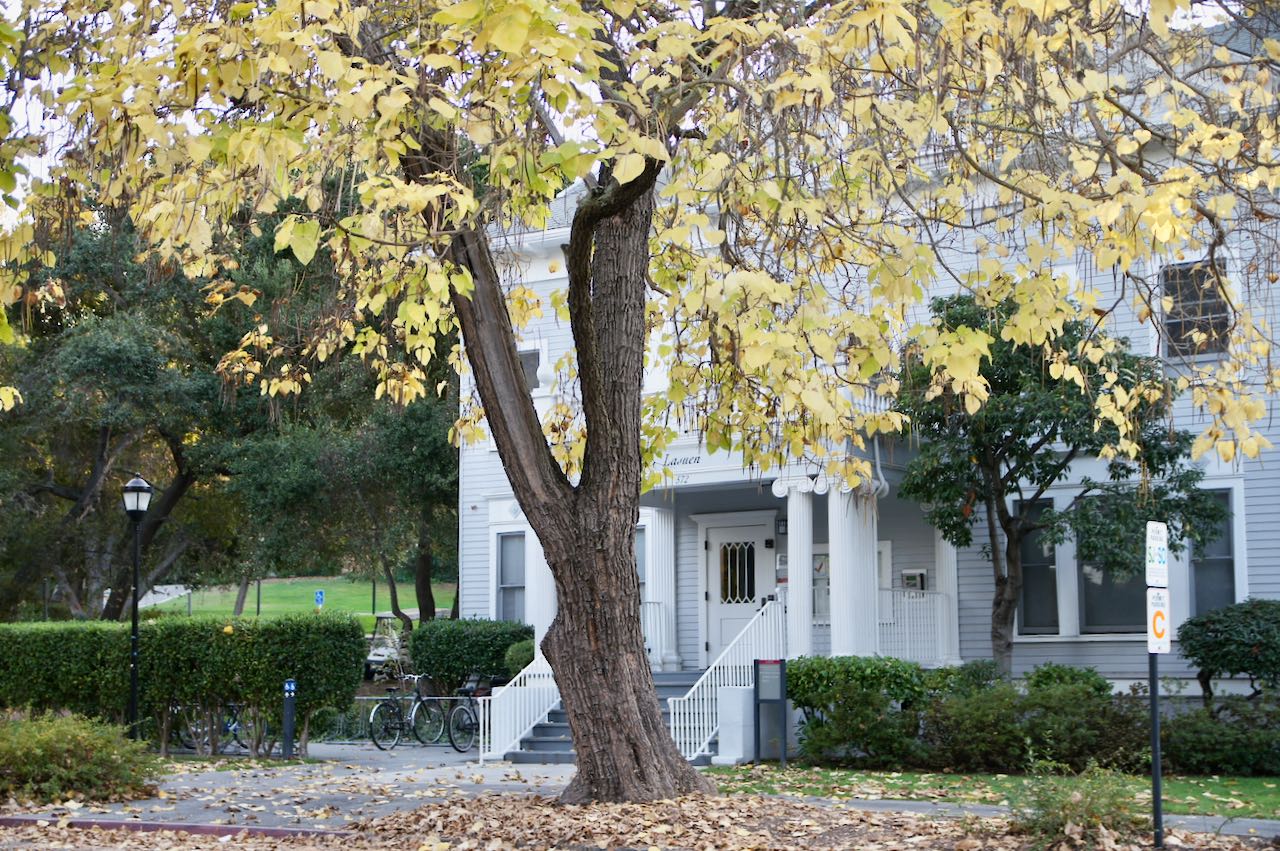Catalpa speciosa
 western catalpa
western catalpa

In spring the catalpas are noticeable for their foot-long pods ⅓ inch in diameter, known as Indian cigars, hanging from the leafless branches. The name catalpa is from a Creek word. If you open the pod you will be surprised by the several dozen unusual seeds, which are over an inch long with teased-out tufts at both ends making a total length of over 2 inches. By comparison the centrally situated kernel is extremely small, even hard to find. They have a serene mode of falling through the air that results in three out of four landing the same way up. Also in the pod is an interesting stiff divider that looks as though it should be useful for something.
When the large leaves come they are heart-shaped, 6 or more inches long, and they smell. The white 2-inch upright frilly bells have purple spots; when a tree is in full flower in June it is a fine sight. The durability of the wood is fabled in North American history. The seed pod and seeds are strikingly similar to those of Chilopsis, though larger, while Jacaranda, another on-campus genus of the family has a strikingly different seed pod and seeds.
There are several catalpas on Mayfield Avenue stretching from Lasuen (572 Mayfield Avenue) to Xanadu (558). A massive pair is in front of Robert Moore North (562); across the tree another handsome pair is on the right at Hillel Center (565). Fine examples can be found in Palo Alto, for example at 2349 Dartmouth Street one is next to a Monterey cypress and another around the corner on California Avenue.
Campus’s catalpas were thought to be mostly the southern catalpa, C. bignonioides, but that species is vanishingly rare in California.
Name derivation: Catalpa – Native American name for C. speciosa; speciosa – Latin for showy.
About this Entry: The main text of this entry is from the Catalpa bignoniodes entry of book Trees of Stanford and Environs, by Ronald Bracewell, published 2005. Additions/Revisions were written by Ronald Bracewell as well (per John Rawlings), and added to the entry by Mr Rawlings (c 2011). Note on species probably being C. speciosa added (Oct 2017, SP). Various edits; ID changed to C. speciosa (ref. Arthur Lee Jacobson, pers. comm.) (Jan 2024, SP).



